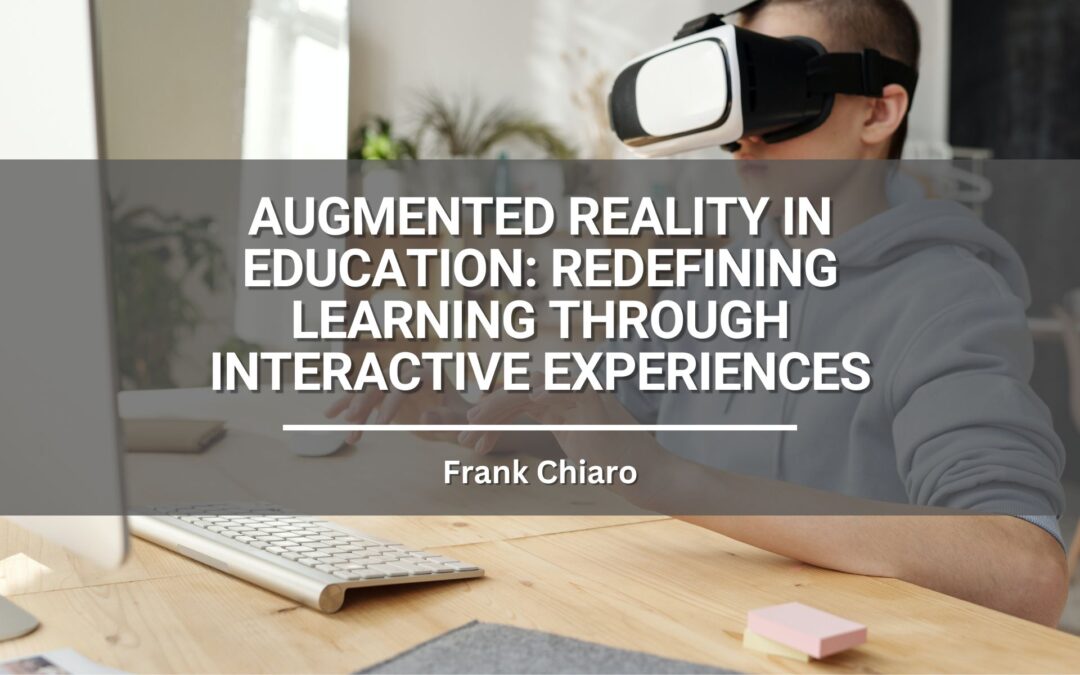In today’s fast-paced digital age, the world of education is undergoing a remarkable transformation, thanks to Augmented Reality (AR). This cutting-edge technology is reshaping the way students learn, making education more captivating and effective than ever before. In this article, we’ll explore how Augmented Reality is revolutionizing education by creating immersive, interactive learning experiences that engage students in a whole new way.
Augmented Reality: A Fresh Perspective on Learning
At its core, Augmented Reality adds a layer of digital content onto the real world. Students can access this digital layer through AR-enabled devices like smartphones, tablets, or AR headsets, turning traditional lessons into engaging adventures.
Firing Up Curiosity and Imagination
Imagine studying biology by taking a journey inside the human body. With AR, students can explore organs and systems in a dynamic, lifelike manner. This immersive experience sparks curiosity and ignites their imagination, making learning enjoyable and unforgettable.
Bringing Learning to Life
AR bridges the gap between classroom learning and real-world applications. Students can conduct virtual experiments, design virtual structures, and perform chemistry experiments safely. This hands-on approach enhances practical skills and deepens understanding.
Personalized Learning for Every Student
AR tailors learning experiences to each student’s unique needs and style. By adjusting content and difficulty levels, AR applications provide targeted support and challenges. This individualized approach boosts engagement, motivation, and academic performance.
Collaboration and Social Learning
AR encourages collaboration among students. Virtual group projects, interactive quizzes, and AR games promote teamwork and problem-solving skills. By exploring together, students learn from each other, creating a supportive learning environment.
Enhancing Accessibility and Inclusivity
AR makes education more accessible and inclusive. It provides additional visual and auditory cues for students with special needs, accommodating various learning styles. This ensures that every student can actively participate and benefit from the educational content.
AR and Language Learning
AR transforms language learning. Students can engage in virtual conversations, practice vocabulary in context, and explore foreign cultures in immersive ways. This interactive approach enhances language acquisition and fluency.
Proven Positive Impact
Numerous studies show AR’s positive impact on learning outcomes. Students using AR technologies perform better academically and retain information longer. AR enhances spatial understanding and problem-solving skills, as reported by Stanford University.
Expanding Global Learning Opportunities
AR opens doors to global experiences. Students can virtually explore different cultures, landmarks, and historical sites. This global perspective fosters cultural understanding, broadens horizons, and promotes interconnectedness in our increasingly globalized world.
Changing Assessments for the Better
AR revolutionizes assessments. Instead of rote memorization, students engage in interactive, practical assessments. They solve AR-based puzzles, complete virtual experiments, and showcase their understanding through creative projects, preparing them for the demands of the modern workforce.
Augmented Reality is reshaping education, making it more engaging, inclusive, and effective. By embracing AR’s capabilities, educators are sparking curiosity, promoting collaboration, and preparing students for the ever-changing world. As technology advances, it’s crucial for educators, policymakers, and stakeholders to embrace Augmented Reality and integrate it into education, ensuring that future generations are well-equipped for success.
